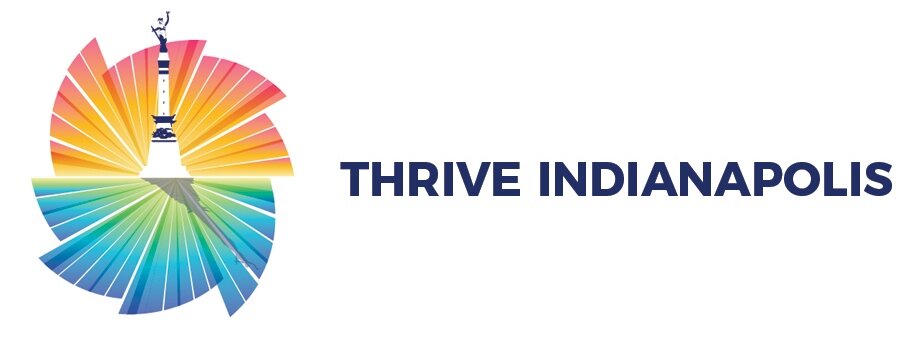Release: Mayor Joe Hogsett Plants Indy's 30,000th Tree, Marking Major Milestone in City's Increasing Sustainability and Resiliency Goals
INDIANAPOLIS -- Mayor Joe Hogsett, the Indianapolis Office of Sustainability and local nonprofit Keep Indianapolis Beautiful (KIB) gathered today to plant the 30,000th new tree in Indianapolis, celebrating the completion of a critical goal in Thrive Indianapolis as well as Indy’s 35th official Tree City USA designation. Photos from the event are included below.
The 30,000 trees included in this tally have been planted within Marion County public right-of-way since the benchmark in 2018 and include trees planted by the Department of Public Works' Urban Forestry, Land Stewardship, and Engineering programs, the Department of Parks and Recreation, as well as those planted via the City's partnership with KIB, IUPUI, Downtown Indy, trees planted via Citizen Energy Group's 10,000 Trees Initiative with KIB, and AES Indiana's Trees For Indy program. The specific tree species chosen for the plantings are always carefully selected based on location in order to ensure maximum benefits and minimal conflict with the surrounding environment. Species include red oak, hackberry, sugar maple, sweet gum, and tulip poplars, Indiana's official state tree.
“As city leaders, we spend a lot of time talking about ways to increase public health – from addressing a pandemic to reducing gun violence – but what we cannot undervalue is the demonstrated public health advantages of trees and greenspaces when it comes to mitigating the climate crisis,” said Mayor Joe Hogsett. “From improved air quality to moderated temperatures to enhanced mental health benefits, Indianapolis is a healthier city today because of these 30,000 additional trees taking root in our soil.”
Thrive Indianapolis, the first sustainability and resilience action plan in Indy's history, was developed through community engagement and adopted by the city in 2019. The goals outlined in the plan prioritize community collaboration to achieve equity in policy, planning, and project implementation and set a path for citywide carbon neutrality by 2050 by addressing the growing hazards of a changing climate. The 59 action items in the plan are organized into eight different elements of sustainability, including natural resources where today's achievement is detailed. The data captured to track these goals, as well as other educational resources on local climate action, is available for the public at ThriveIndianapolis.com.
“Today marks an exciting accomplishment in our efforts to make Indy greener, cleaner, and healthier,” said KIB president and CEO Jeremy Kranowitz. “Thanks to the collaboration of numerous partners, thousands of volunteers who stepped up to improve their city, and Mayor Hogsett’s focus on community resiliency and sustainability, we can not only celebrate more trees around our city but the generational benefits they will bring.”
Via this planting celebration, community leaders are also commemorating Indy's recognition by the Arbor Day Foundation (in partnership with the U.S. Forest Service and the National Association of State Foresters) as a Tree City USA for the City's commitment to effective urban forest management. This is the 35th consecutive year that the Department of Public Works' Urban Forestry team has achieved this designation.
“Increasing the City's urban tree canopy has several, far-reaching benefits for our communities,” said Morgan Mickelson, Director of the Indianapolis Office of Sustainability. “It improves poor air quality by capturing carbon; prevents flooding by absorbing stormwater, thus reducing runoff from entering and overwhelming the combined sewer system; and decreases the urban heat island effect, a real climate threat in Indianapolis and other urban areas where the density of concrete and other man-made structures creates a significant increase in temperature and extreme heat risk compared to more rural surrounding areas with natural landscapes.”
Through the development of Thrive, research found that in Indianapolis, summertime maximum daily temperatures can vary by up to 15 degrees depending on the specific neighborhood. Increasing the number of trees and greenspaces has also been shown to increase community cohesion and provide public safety benefits, potentially due to the calming effect lower temperatures achieved through shade can have on feelings of aggression during extreme heat events.
KIB utilizes tree canopy data as well as several other demographic indicators to determine where to equitably allocate resources to ensure areas receiving tree plantings and litter abatement work are the most in need via its Key Neighborhood Identification Tool (KNIT) scoring system. Other organizations interested in practically leveraging this data are encouraged to reach out to the Indianapolis Office of Sustainability.
KIB undertakes extensive community engagement efforts to work with neighborhood residents and stakeholders on proposed plantings. The intentional location of Willard Park for this ceremonial planting is an excellent example of a community receiving green infrastructure investment based on the KNIT score for the continued clean air, lowered air temperatures, preserved natural resources, and stormwater retention efforts that trees can provide. The overall strategy of a data-driven evaluation coupled with community engagement efforts is indicative of the City’s equity-driven approach for all work included in Thrive Indianapolis.
While this 30,000th tree celebration marks the early completion of a 2025 goal, KIB will host additional plantings throughout 2023 (and the following years). Community members who would like to participate in future plantings are encouraged to learn more and register at www.kibi.org/projects.
